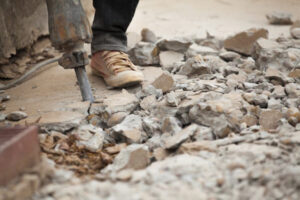When getting construction work done, we have to acknowledge that accidents are within the realm of possibilities. As such, we need to be made aware of the many dangers around your construction site so you can take measures to avoid getting any people or property harmed. Underground utilities are a prominent danger during construction, and different utilities can be dangerous in different ways. Today, we will review the dangers that different underground utilities present to you.
Gas Assets and Oil Pipelines
Whenever you work in close proximity to gas assets, there is the possibility of fires, or even explosions, if you aren’t careful. Even people who are in the general vicinity of the gas could be harmed as well.
Oil pipelines can be dangerous because not only do they emit gasses, but they also have the ability to infect soil and waterways.
Electrical Cables
Electrical cables are common to find around construction sites, and the dangers with them are exactly what their name would suggest. Striking live electrical cables could cause people to get hit with electric shocks. The dangers only heighten when electricity can mix with gasses because the two of these together could cause fires and explosions.
Water Pipes
Under immense amounts of pressure, these underground utilities transport water. Striking a water pipe can be a serious problem because high-pressure water and propel debris could get released and result in the entire area getting flooded. This can result in damage to people and machinery. If electrical currents get into the mix, people can also suffer from strong electrical shocks.
What to Do If Underground Utilities Get Hit
Hitting underground utilities is incredibly dangerous, and it can lead to expensive repairs, project delays, property damage, and worst of all, fatalities! If you strike an underground utility, here are the procedures you’ll want to follow:
- Get People to Safety: Stop working immediately and make sure that everyone can get a safe distance away from the construction site. If anyone has injuries, you should contact the needed medical emergency staff and local authorities to get them the attention they need.
- Control All of the Hazards and Risks: After you’ve gotten everyone to safety, damage control is your next priority. You don’t want the damage caused by underground utilities to spread. Keep people at a safe distance from all pipes and cables, just in case anything emits from damaged utilities, such as fumes, which could be dangerous if you’re too close to them.
Lastly, remember that these safety precautions should be followed even if the damage to underground utilities only seems to be minor. It doesn’t take much damage for gasses and other substances to leak out, so you’ll want to follow the same safety procedures, whether the damage to these utilities is small or large.
Concrete Visions Will Get The Job Done Right
Concrete Visions has been working with clients for over 25 years. Our G&M Services installers are certified with the industry’s major firestop product manufacturers. As part of our firestop service, we can assess abnormal field conditions and, with the manufacturer’s technical support assistance, provide engineering judgments in a timely fashion to comply with contract specifications. Our Field Mechanics undergo ongoing training, including mandatory monthly safety meetings, weekly Toolbox Talks where safety and equipment information is shred, and trainings on safe work standards and safety best practices.

